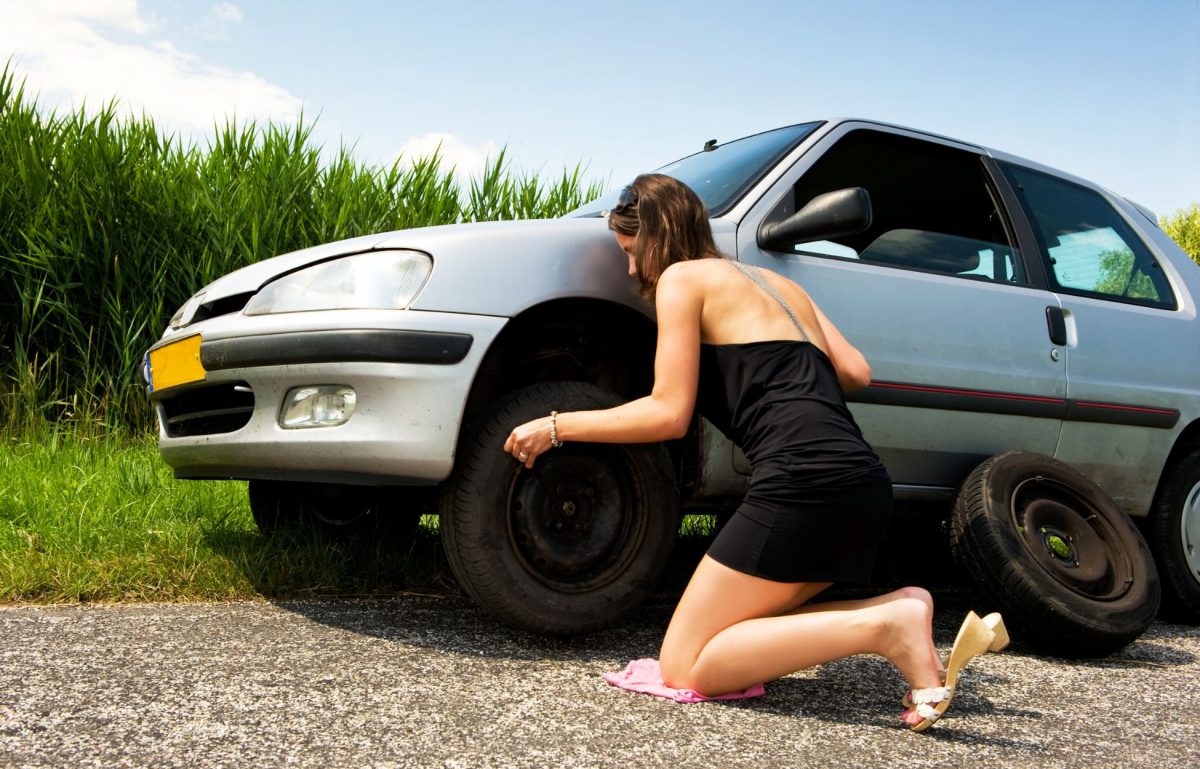There are some things that every car owner should know how to fix on their vehicle. Below, we explain a few basic do-it-yourself car repairs everyone should know how to do.
Changing a Flat Tire
Changing a flat tire is perhaps the most basic emergency car maintenance that every driver will likely encounter at some point, and should know how to fix. While many drivers can call a tow truck or roadside assistance for free, if you’re stranded in the middle of nowhere or stuck in a dangerous predicament, it’s safer and faster to change the tire yourself.
Anyone can change a tire if they have the necessary tools of a jack, a lug wrench, and a spare tire. Simply jack up the car, remove the hub cap, remove the lug nuts with the lug wrench, mount the new tire, tighten the lug nuts, lower the vehicle, and you’re done! Also, remember that you can use a spare tire more than once, so don’t throw it away when you get a new permanent tire.
Paint Scratches
Perhaps the easiest do-it-yourself car repair that everyone should know how to do is to get rid of body scratches. Getting a scratch on your car’s exterior is frustrating, but most scratches are superficial clear coat scratches, and you can fix them with minimal effort.
Simply polishing a clear coat scratch with a rubbing compound will remove the damaged layer and make it look new again. If it’s a deeper primer or paint scratch, you’ll likely need to bring it to a professional as the job will likely require repainting and repriming the entire scratch area.
Replacing a Headlamp/Taillight
One of the easiest ways to get pulled over and receive a ticket is to drive with a headlamp or taillight out. If you buy a headlamp or taillight bulb at an auto shop, many will offer free installation, but if you already have a bulb, you can put in the new light yourself!
You’ll need the new bulb, gloves, a clean cloth, a screwdriver, and your owner’s manual. Consult the owner’s manual to locate the wiring harness, and once you know that, changing the bulb is as simple as removing the harness with the screwdriver and swapping out the old bulb for the new one, as you’d do for any light at home.
Jump-Starting a Dead Battery
Another common problem many drivers deal with at some point is a dead battery. If you have a pair of jumper cables and a car with a functioning battery, jump-starting a dead battery is pretty straightforward.
With both cars off, connect the positive cable to the positive terminals for both batteries. Connect the negative cable to the working battery’s negative terminal and ground the other end by attaching it to the engine block or metal surface. Start the car with the working battery first, let it run for a few minutes, and then try to start the vehicle with the dead battery. It should start right up!













